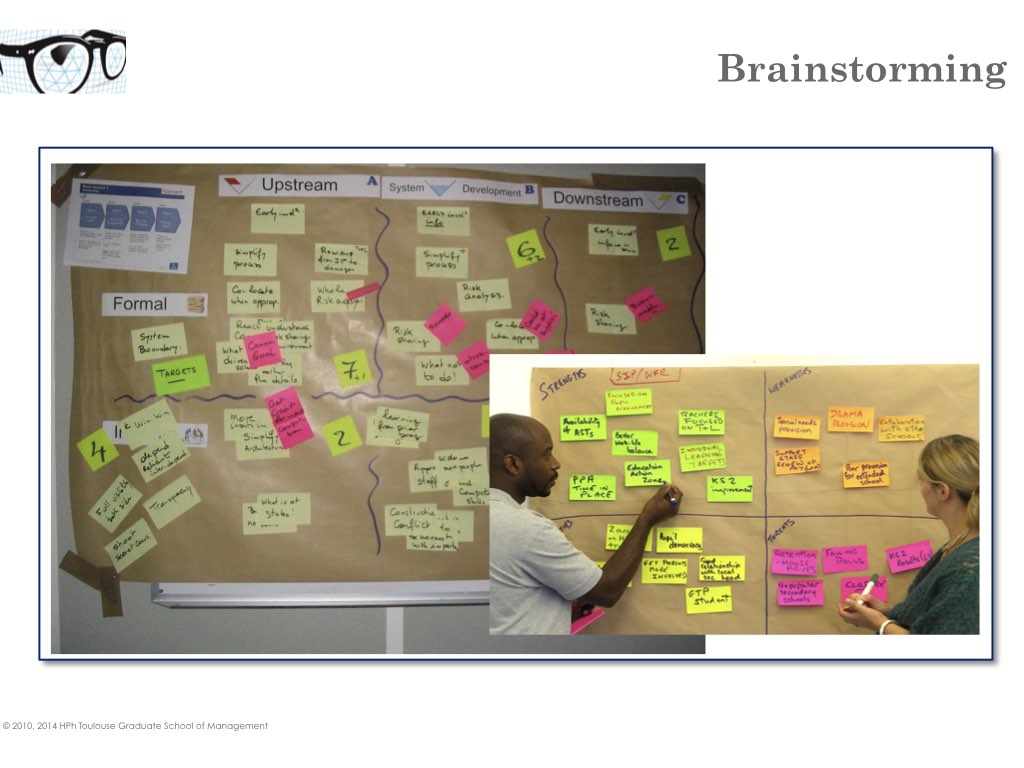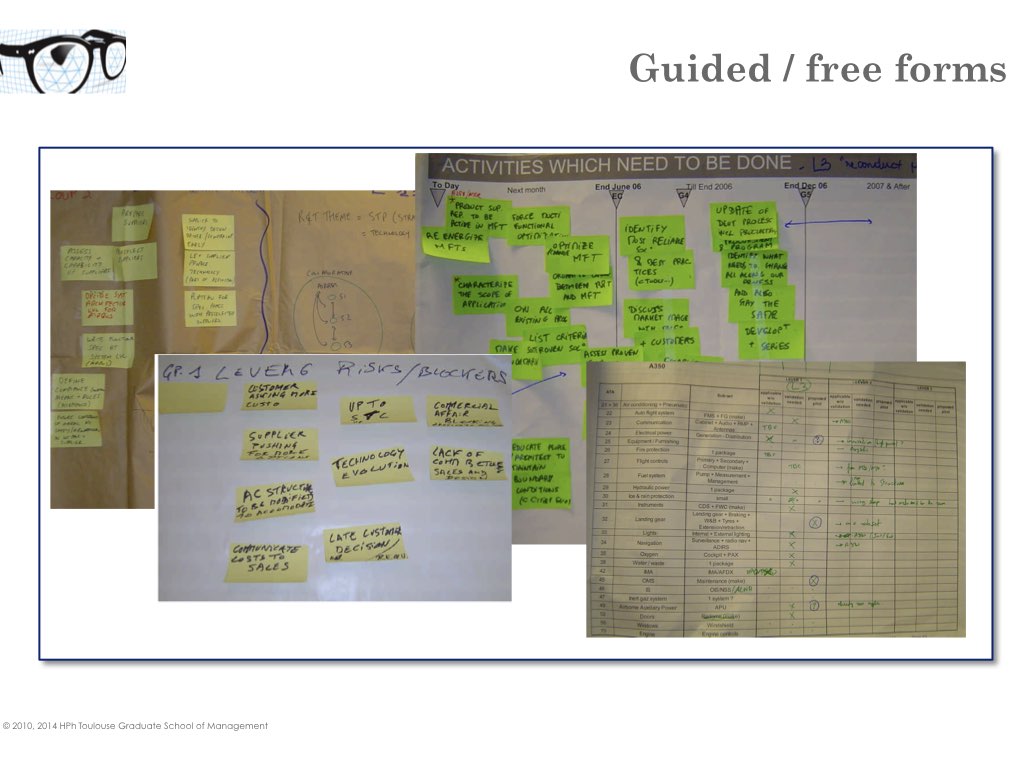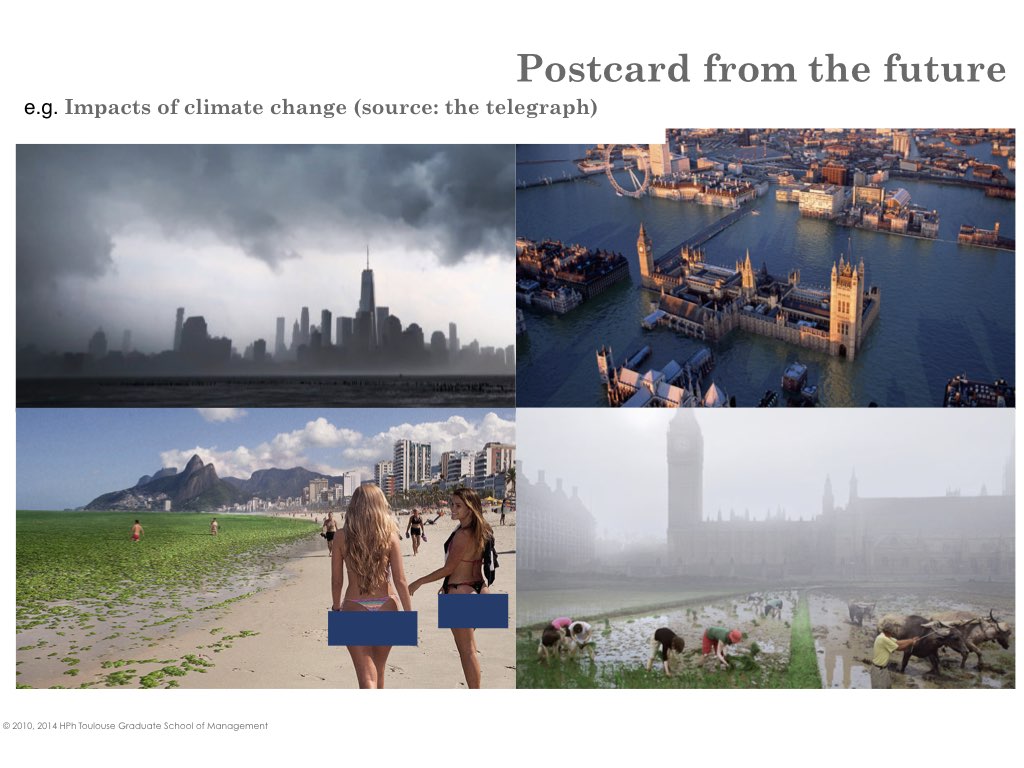Facilitation
Several tools and technics can be leveraged and this section is not a comprehensive list.
Brown Paper
Developing a strategy requires to brainstorm and challenge many ideas. Although many techniques can be mobilized to facilitate exchanges, the use of sticky notes is the most versatile and commonly used tool.
Working sessions can be used to delineate a market or activity domain, to brainstorm ideas & innovations, to appraise candidate proposals, to assess feasibility, etc. Sticky notes can also be used to draft findings (e.g. build matrices) in team. Indeed on the one hand, it is very easy to correct and adjust: a note can be moved from one cell to the next or removed, or added. On the other, it simplifies communication, whereas using a computer (even connected to a video projector) tends to create a ’communication wall’ between the facilitator and the rest of the group.

There are too fundamental modes for a brainstorming session.
Guide Session - attendees generate ideas whereas the facilitator listens to them and captures all the ideas. The facilitator writes ideas on sticky notes (he/she decides what to write) and organizes the brown paper. The facilitator can stimulate the discussion and ideas production by asking questions to the group.
Unguided Session - attendees directly produce and stick the post-it notes. This requires clear objectives and ’ground rules’ to ensure that all the attendees can get sufficient autonomy (e.g. two notes each, no more than three words per notes, active verbs, etc).
In practice, it is very common to combine the two modes. A warm-up exercise (the first of a session) will usually be guided to ’set the tone’ for the session. Then it is usually a good idea to alternate guided and unguided exercises to ensure that all the attendees can contribute.

Sessions must always be prepared. The facilitator must know what the objectives are and must guide the group while not constraining creativity and openness. Pre-print background templates (e.g. tables) can help focussing the course of a session, while plain backgrounds (’brown paper’ type) are more adapted to releasing creativity.
Postcard from the future
A Postcard form the future is a short and inspiring description of the expected future state.
It can be co-designed (co-written) with participants to foster their ability to think outside-the-box. The primary interest of the method is that it focusses on the What (how the future state can be reached is not addressed at first) and describes the future from the perspective of the persons who will benefit from it (e.g. customers).
It can also be used as an alignment tool to unsure that the persons who are in charge of making it happen do understand the objective and can visualize the destination of the journey.
Last but not least, it can convey very visual representations of possible futures (including unwanted futures)
